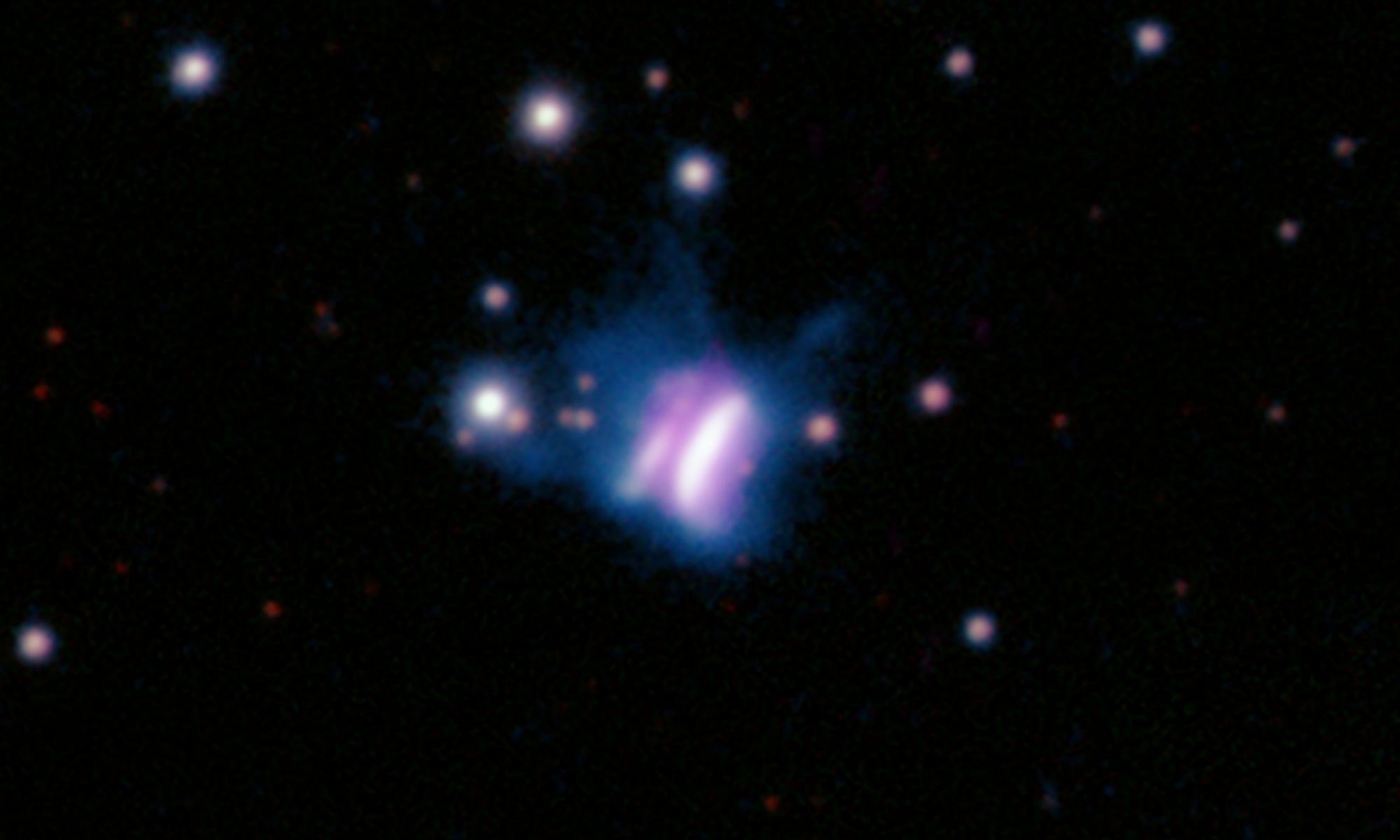Roughly 1,000 light-years from Earth, there is a cosmic structure known as IRAS 23077+6707 (IRAS 23077) that resembles a giant butterfly. Ciprian T. Berghea, an astronomer with the U.S. Naval Observatory, originally observed the structure in 2016 using the Panoramic Survey Telescope and Rapid Response System (Pan-STARRS). To the surprise of many, the structure has remained unchanged for years, leading some to question what IRAS 2307 could be.
Recently, two international teams of astronomers made follow-up observations using the Submillimeter Array at the Smithsonian Astrophysical Observatory (SAO) in Hawaii to better understand IRAS 2307. In a series of papers describing their findings, the teams revealed that IRAS 23077 is actually a young star surrounded by a massive protoplanetary debris disk, the largest ever observed. This discovery offers new insight into planet formation and the environments where this takes place.
The first paper, led by Berghea, reports the discovery that IRAS 23077 is a young star located in the middle of what appeared to be an enormous planet-forming disk. In the second paper, led by CfA postdoc Kristina Monsch, the researchers confirm the discovery of this protoplanetary disk using data from Pan-STARRS and the Submillimeter Array (SMA). The first paper has been accepted for publication, while the second was published on May 13th in The Astrophysical Journal Letters (respectively).

Protoplanetary disks are basically planetary nurseries consisting of the gas and dust that have settled around newly formed stars. Over time, these disks become rings as material coalesces into protoplanets in certain orbits, where they will eventually become rocky planets, gas giants, and icy bodies. For astronomers, these disks can be used to constrain the size and mass of young stars since they rotate with a specific signature. Unfortunately, obtaining accurate observations of these disks is sometimes hampered by how they are oriented relative to Earth.
Whereas some disks appear “face-on” in that they are fully visible to Earth observers, some planet-forming disks (like IRAS 23077) are only visible “edge-on,” meaning the disk obscures light coming from the parent star. Nevertheless, the dust and gas signatures of these disks are still bright at millimeter wavelengths – which the SMA observes. When the Pan-STARRS and SWA teams observed IRAS 23077 using the combined power of their observatories, they were quite surprised by what they saw.
Kristina Monsch, an SAO astrophysicist and a postdoctoral fellow at the CfA, led the SMA campaign. As she related their findings in a recent CfA news release:
“After finding out about this possible planet-forming disk from Pan-STARRS data, we were keen to observe it with the SMA, which allowed us to understand its physical nature. What we found was incredible – evidence that this was the largest planet-forming disk ever discovered. It is extremely rich in dust and gas, which we know are the building blocks of planets.”
“The data from the SMA offer us the smoking–gun evidence that this is a disk, and coupled with the estimate of the system’s distance, that it is rotating around a star likely two to four times more massive than our own Sun. From the SMA data we can also weigh the dust and gas in this planetary nursery, which we found has enough material to form many giant planets – and out to distances over 300 times further out than the distance between the Sun and Jupiter!”

After Berghea observed IRAS 23077, he suggested the nickname “Dracula’s Chivito,” which paid tribute to “Gomez’s Hamburger,” another protoplanetary disk that is only visible edge-on. First, Since Berghea grew up in the Transylvania region in Romania, close to where Vlad the Impaler (the inspiration for Bram Stoker’s tale) lived, he suggested Dracula. Having grown up in Uruquay, Berghea’s co-author Ana suggested “chivito,” a hamburger-like sandwich and the national dish of her ancestral country. Said co-author Joshua Bennett Lovell, an SAO astrophysicist and an SMA Fellow at CfA:
“The discovery of a structure as extended and bright as IRAS 23077 poses some important questions. Just how many more of these objects have we missed? Further study of IRAS 23077 is warranted to investigate the possible routes to form planets in these extreme young environments, and how these might compare to exoplanet populations observed around distant stars more massive than our Sun.”
The discovery of this disk also incentivizes astronomers to search for similar objects in our galaxy. These observations could yield valuable information on planetary systems in the earliest stage of formation, which could lead to new insights into how the Solar System came to be. The SMA is an array of telescopes in Hawaii jointly operated by the Smithsonian Astrophysical Observatory (SAO) at the Harvard & Smithsonian Center for Astrophysics (CfA) and the Academia Sinica Institute of Astronomy and Astrophysics (ASIAA) in Taiwan.
Further Reading: CfA

